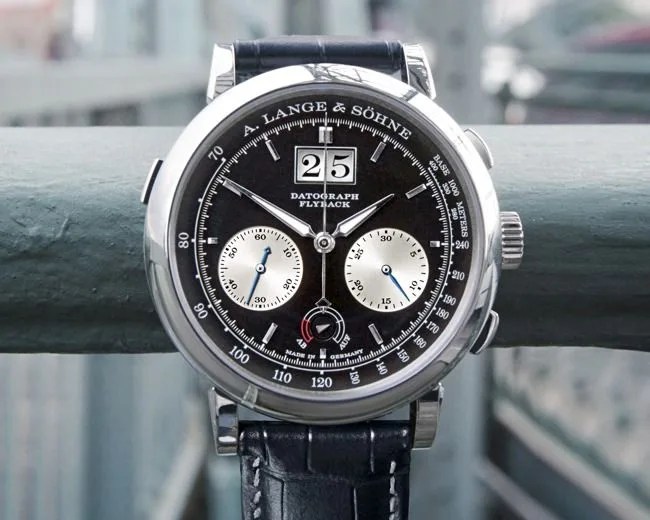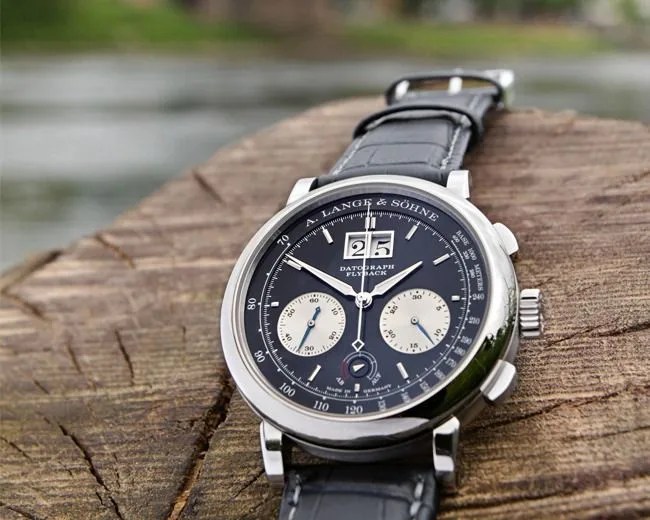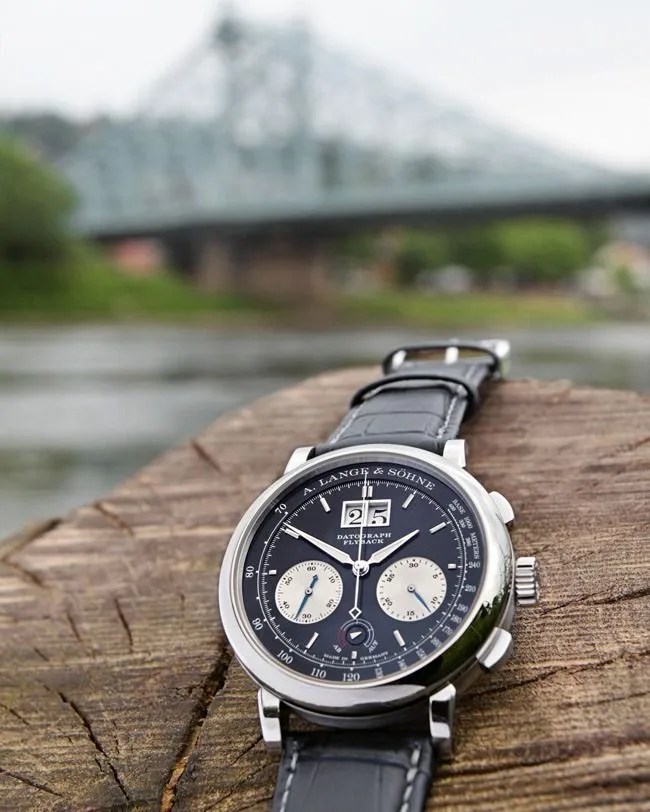 ALS
ALSTwo years ago, we were invited to visit the Glashütte, Germany workshops of A. Lange & Söhne, and ever since then, we’ve been a fan of the brand. Their understated elegance flies under the radar of all but the timepiece cognoscenti, most of whom shorten the tongue-twister name into simply, “Lange”. Since the brand emerged from a half-century hibernation in 1994 they have rarely put a foot wrong, carefully introducing a small number of new, innovative references each year.
One favorite piece of ours has been the Datograph, Lange’s über-chronograph with the flyback complication and oversized date display. Aside from its exquisite beauty from any angle, including the back, where the 451 hand-decorated pieces of the movement can be viewed, the Datograph is also a milestone watch not only for A. Lange & Söhne but also for the watch industry at large. At the time of its introduction in 1999, the Datograph was the first chronograph movement designed entirely from scratch in over two decades. This was no small feat especially considering that the new Lange brand was only five years old at the time and that the chronograph, despite its ubiquity, is perhaps the most difficult movement complication to get right.


In 2012, Lange has refreshed the Datograph with a subtly redesigned reference, called the Datograph “Up/Down” (or “Ab/Auf” outside of English-speaking markets). Can you improve on perfection? We think so. With the Datograph Up/Down, Lange increased the case size to 41mm and, while we’re not cheerleaders for the big watch trend, the new diameter seems to fit the watch better, especially given its rather ample height. They also swapped out the Roman numeral markers from the previous Datograph in favor of applied stick markers and, perhaps most significantly, added a power reserve indication to the bottom of the dial, which tracks all 60 of the mainspring’s hours of tension.
Of course, at the heart of the Datograph is the stopwatch function and here, this watch excels. Depressing the chronograph pushers is so silky, it’s enough to make even the most hardened watch geek blush and go back for more. And that’s fine, because the Datograph is a flyback meaning that a single press of the bottom button resets and restarts the chronograph instantaneously.

Half an hour from the watchmaking hamlet of Glashütte is the reborn city of Dresden, a once-dour metropolis dealt a double-blow by World War II and then decades behind the Iron Curtain. A proud emblem of the city and of the entire state of Saxony is the Loschwitz Bridge over the River Elbe known more commonly as the “Blue Wonder.” The bridge straddles the river without the help of piers, which was significant when it was built in the 1890s and is still impressive today. For the launch of the Datograph Up/Down, A. Lange & Söhne, took the watch to the Loschwitz Bridge for a photo shoot. The pictures you see here are the result: two proud examples of Saxon ingenuity, one the Blaues Wunder, the other simply wunderbar.

